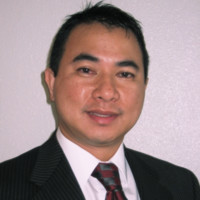Are you tired of mountains of paperwork cluttering your clinic? Do you spend precious time searching for patient records, flipping through bulky files, and dealing with misplaced documents? If so, it’s time to upgrade to Electronic Health Records (EHR)—the modern, efficient, and secure way to manage healthcare data. Knowing the Electronic Health Records (EHR) definition can be a game-changer in your practice!
With patient volumes increasing and administrative tasks piling up, Filipino doctors, clinics, and telemedicine providers need a smarter solution. EHR systems eliminate the hassle of manual record-keeping by digitizing patient information, making it instantly accessible whenever and wherever needed.
What Exactly Is an EHR System?
The Centers for Medicare & Medicaid Services (CMS) defines Electronic Health Records (EHR) as “a digital version of a patient’s paper chart that makes information available instantly and securely to authorized users” (CMS). But what does this mean for Filipino healthcare professionals?
In simple terms, an EHR system is a centralized, digital database that allows doctors, nurses, and healthcare staff to:
- Access and update patient records in real time
- Track medical history, prescriptions, and treatment progress
- Securely store test results, diagnoses, and imaging reports
- Reduce administrative workload and eliminate paperwork hassles
- Enhance collaboration between multiple healthcare providers
Unlike paper records, which are prone to loss, damage, and misfiling, EHRs are secure, easily searchable, and backed up, ensuring critical patient information is never misplaced.
How Do EHRs Benefit Filipino Healthcare Providers?
For Filipino doctors managing multiple patients daily, the efficiency and organization of an EHR system are game-changers. Whether you’re a solo practitioner, run a busy clinic, or offer telemedicine consultations, having a digital health record means:
- Fewer errors and misdiagnoses due to real-time updates and alerts
- Faster access to patient history, reducing waiting times
- Automated documentation, freeing up more time for patient care
- Easy coordination between specialists, ensuring seamless referrals
With the rise of telemedicine in the Philippines, EHRs play an even more crucial role. Doctors offering virtual consultations can access records remotely, review previous diagnoses, and prescribe medication electronically—all within the system. This is especially beneficial for rural healthcare providers serving patients in remote areas who may have limited access to in-person care.
Compliance, Security, and Government Regulations
Globally, governments are pushing for digital transformation in healthcare, and the Philippines is no exception. The Department of Health (DOH) and other regulatory bodies encourage healthcare providers to modernize their operations, ensuring data privacy compliance and improved patient outcomes.
With data protection laws becoming stricter, clinics and hospitals must prioritize patient confidentiality. Modern EHR systems are built with advanced security features, including encryption, multi-factor authentication, and secure backups, ensuring that only authorized personnel can access patient data.
By adopting an EHR system, Filipino healthcare providers can future-proof their practice, improve efficiency, and enhance patient care—all while complying with government-mandated digital healthcare standards.
It’s time to leave paper-based inefficiencies behind and embrace a smarter, faster, and more secure way of managing patient records.
Why Are EHR Systems Essential in Modern Healthcare?
1. Better Patient Management & Accessibility
Gone are the days of shuffling through dusty cabinets, misplaced files, and inefficient record-keeping. With Electronic Health Records (EHRs), healthcare professionals can access patient records anytime, anywhere—whether they’re at their clinic, a hospital, or conducting a telemedicine consultation. Instead of spending valuable time searching for patient history, prescriptions, or test results, everything is available in just a few clicks.
Seamless Coordination & Continuity of Care
Continuity of care is crucial in modern healthcare, and EHRs play a pivotal role in ensuring that patient information remains accurate, up-to-date, and easily accessible. When a patient switches doctors, visits multiple specialists, or is referred to a different hospital, their records can be instantly shared with authorized healthcare providers.
This prevents:
- Redundant or unnecessary tests—saving patients time and money.
- Medical errors due to incomplete records or lack of patient history.
- Delays in diagnosis and treatment—improving health outcomes.
For Filipino healthcare providers, especially those dealing with patients with chronic conditions, this instant accessibility ensures that treatment plans remain consistent and well-coordinated.
Integration With Medical Devices & Real-Time Updates
Modern EHR systems integrate with various medical devices and software, enabling real-time updates for lab results, radiology images, and vital statistics. Blood tests, X-rays, MRIs, and other diagnostic findings are automatically linkedto the patient’s profile, eliminating manual data entry errors and ensuring that doctors can make informed decisions instantly.
This seamless connection between EHRs and diagnostic tools allows doctors to:
- Detect critical health conditions earlier, leading to timely intervention.
- Monitor trends in patient health by tracking historical data.
- Avoid discrepancies that arise from paper-based record-keeping.
Reduced Administrative Workload & Increased Efficiency
Clinics and hospitals experience a significant reduction in administrative workload when shifting to an EHR system. Staff members no longer have to manually record data, search for files, or handle stacks of paperwork. This shift allows them to:
- Focus more on patient care rather than data entry.
- Reduce waiting times for patients by speeding up record retrieval.
- Minimize human errors caused by illegible handwriting or misplaced files.
Additionally, with automated workflows, billing, insurance claims, and prescription refills can be processed more efficiently, leading to smoother operations and improved cash flow for medical institutions.
EHRs & Telemedicine: A Perfect Pair for Filipino Healthcare
With the rise of telehealth services in the Philippines, the need for digital patient records has never been greater. Doctors offering virtual consultations require instant access to patient data, medical history, and previous diagnoses to provide the best care remotely.
EHRs enhance telemedicine by:
- Allowing doctors to prescribe medications online, improving prescription accuracy.
- Providing easy access to previous consultations, enabling consistent care.
- Facilitating remote monitoring of chronic conditions, such as diabetes or hypertension.
The integration of EHRs with telemedicine platforms ensures that even remote consultations remain efficient, reliable, and secure. For Filipino doctors catering to patients in rural or underserved areas, EHRs bridge the gap by making medical records accessible from anywhere, leading to better healthcare delivery nationwide.
In a fast-evolving healthcare landscape, paper-based systems are no longer sustainable. EHRs offer faster, safer, and smarter patient management, empowering Filipino doctors and clinics to provide high-quality, data-driven carewhile optimizing clinic operations.
2. Error Reduction & Increased Accuracy
Medical errors are a leading cause of patient harm. According to a Johns Hopkins study, medical errors account for over 250,000 deaths annually worldwide. EHRs reduce prescription errors, misdiagnoses, and duplicate tests, ensuring patients receive the right treatment at the right time.
One of the most common issues in healthcare is the misinterpretation of handwritten prescriptions. With EHRs, all records are digitally stored, reducing the risk of misreading critical patient information. Furthermore, EHR systems come with built-in alerts and notifications, flagging potential drug interactions, allergies, or contraindications before a prescription is finalized.
Doctors and healthcare providers can also set up customized templates and automated note-taking features, ensuring uniform and thorough documentation. This minimizes the likelihood of missing essential details, which is particularly crucial in emergency cases.
Beyond prescriptions, EHRs improve diagnostic accuracy by consolidating patient history in one place. Instead of piecing together fragmented records, doctors get a comprehensive view of the patient’s medical background. This allows them to make informed decisions faster, ultimately leading to better patient outcomes.
Moreover, automated reminders help patients stay on top of their treatments. Many Filipino patients struggle with medication adherence, forgetting to take their prescribed medicines on time. With EHRs, automated SMS or email reminders can be sent to patients, improving compliance and reducing hospital readmissions.
3. Efficient Scheduling & Automated Reminders
Managing appointments manually is time-consuming. With an EHR system, you can automate scheduling, send appointment reminders, and reduce no-shows. This feature is especially beneficial for busy medical centers and private practitioners looking to optimize their workflow.
Missed appointments are a common challenge in Philippine healthcare settings. Whether due to forgetfulness or scheduling conflicts, no-shows lead to revenue loss and inefficient use of clinic resources. EHR systems help by sending automated appointment reminders via SMS, email, or app notifications, significantly reducing the rate of missed consultations.
Another advantage is the integration of scheduling with patient records. When a patient books an appointment, their entire medical history is readily available to the doctor. This eliminates the need for repetitive questioning and ensures continuity of care.
Moreover, clinics can optimize their daily schedules by analyzing appointment trends. If certain time slots are frequently underutilized, adjustments can be made to maximize efficiency. Automated scheduling systems also help allocate urgent cases and follow-ups, ensuring that critical patients receive timely care.
With digital scheduling, Filipino healthcare providers can offer more flexible options, such as virtual consultations and online booking. This improves patient satisfaction and helps clinics attract and retain more clients.
Ready to Go Digital? Here’s Your Next Step
Transitioning to an Electronic Health Records (EHR) system is no longer a luxury—it’s a necessity for Filipino doctors, clinics, and telemedicine providers looking to stay ahead in the ever-evolving healthcare landscape. The shift from traditional paper records to a fully digital system isn’t just about convenience; it’s about delivering faster, safer, and more accurate patient care while optimizing day-to-day operations.
By implementing an EHR system, you can reduce administrative burden, minimize errors, and improve patient experience with seamless appointment scheduling, real-time access to medical history, and automated reminders. Whether you run a small private practice, a multi-specialty clinic, or a telemedicine service, an EHR helps you save time, enhance efficiency, and ensure compliance with data protection standards.
With the right EHR solution, you can:
- Access patient records instantly—anytime, anywhere.
- Automate scheduling and reminders to reduce no-shows.
- Improve collaboration between healthcare providers with shared access to patient history.
- Enhance security and compliance with built-in data protection.
- Boost efficiency and cut down paperwork, allowing you to focus on patient care.
But what about an EMR system? It’s similar, but simpler. The best way to see how an EMR system can transform your practice is to experience it firsthand.
✅ Book a demo today: Schedule a Demo
✅ Watch how it works: EMR Video Tutorials
Don’t let outdated systems slow you down. Make the switch to a modern, secure, and user-friendly EMR solution today and revolutionize the way you manage healthcare!





